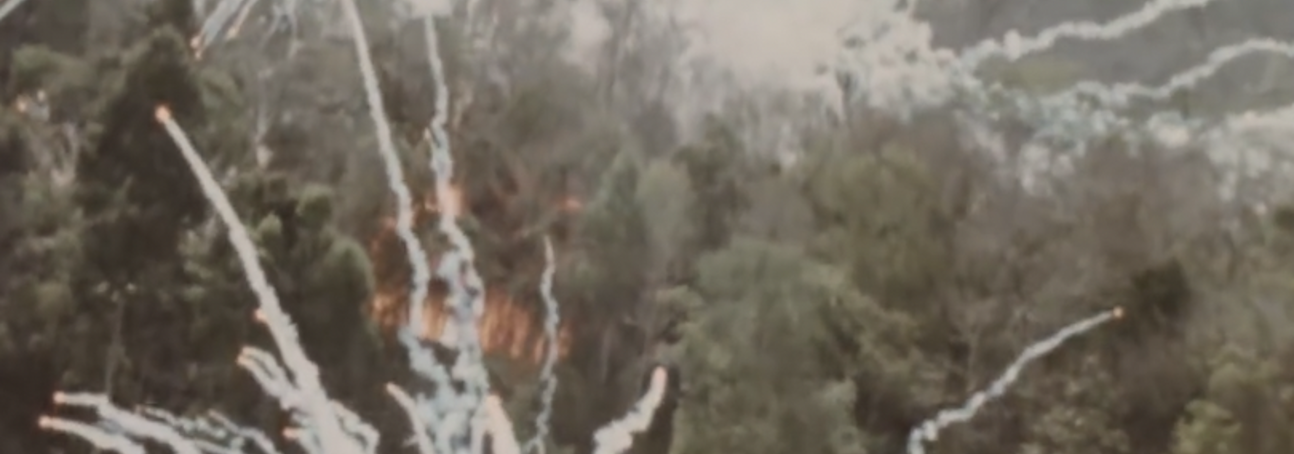With a mountainous border region that straddled the demilitarized zone between North and South Vietnam, Laos’ strategic importance was exploited by North Vietnamese forces when they began constructing the Ho Chi Minh Trail; a network of logistics and infiltration routes vital to their war efforts in the south.
By 1965, 5000 tons of food and equipment were being transported along the trail every month. That same year, the United Statesbegan a massive aerial bombing campaign aimed at halting this flow of men and material through Laos.
This bombing campaign continued until 1973 and saw over two million tons of munitions dropped over Laos. A significant percentage of bombs failed to function, resulting in hundreds of thousands of unexploded munitions littering the Laos landscape that continue to kill and maim Laotians to this day.

With support from the US Government and other donors, since 2012, HALO's Laotian staff have destroyed over 90,000 explosives . Our combined survey and clearance work has allowed the safe release of 317 million square metres of land – an area about twice the size of Washington DC.
What was dropped and where?
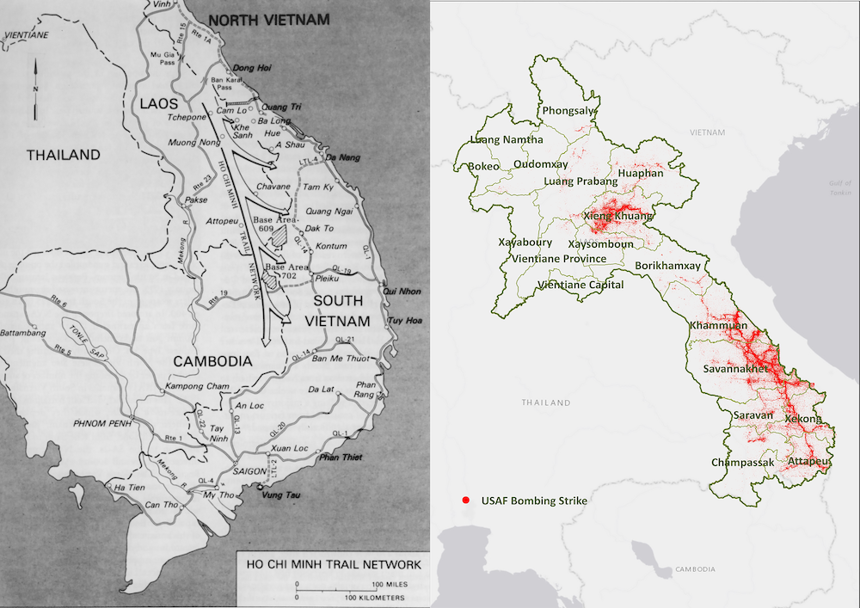
The bombing campaign over Laos saw the widespread use of cluster munitions, relatively small explosive or incendiary devices released from canisters containing 700 bomblets and designed to scatter over a wide area.
Various types of cluster munitions were dropped during the war, but by far the most frequently used was the BLU-26. Consequently, BLU-26 cluster munitions constitute the majority of UXO discovered and destroyed by HALO in Laos.
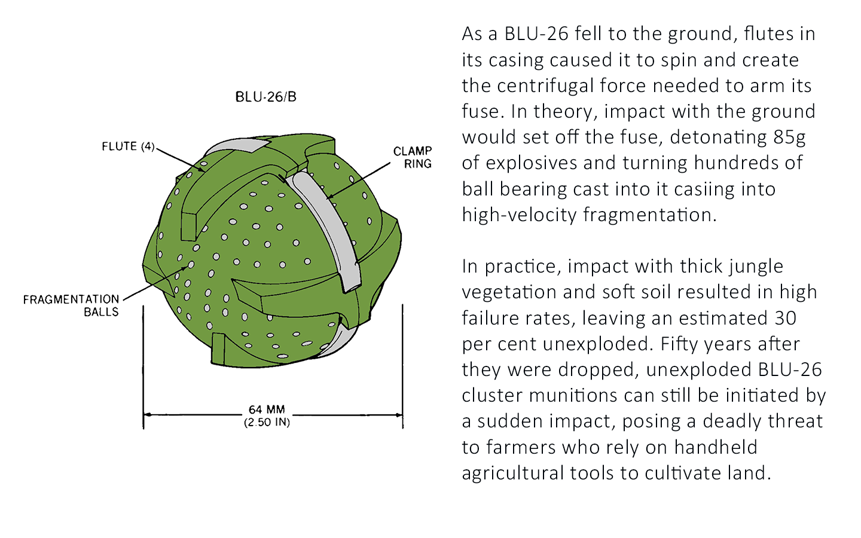
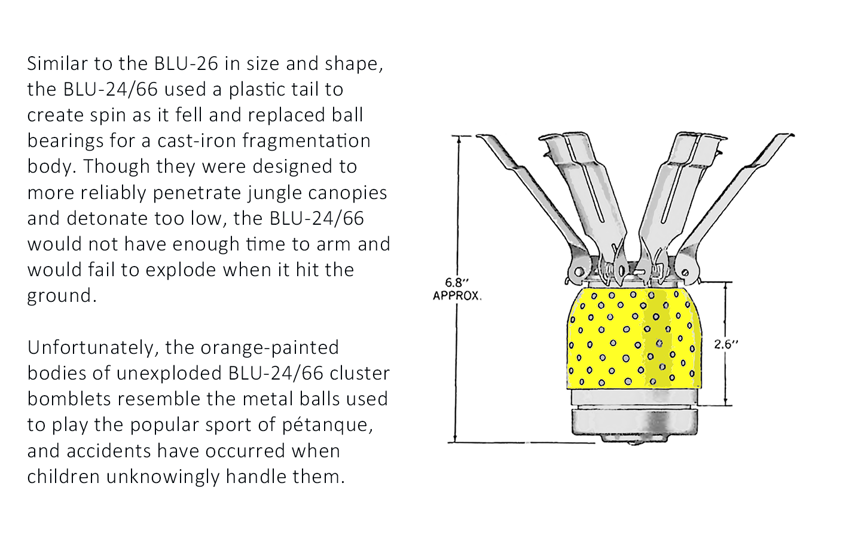
How do you find a 50-year old bomb?
Although US bombing records are available, they are not accurate enough to reliably direct clearance operations. Similarly, standard survey techniques like those employed by HALO in countries affected by landmines are not effective when dealing with a high volume of munitions dropped over 50 years ago.
Technical survey is thus required to confirm the location of hazardous areas. HALO has worked closely with other clearance operators in Laos on the development of a technical survey methodology known as the cluster munition remnants survey (CMRS).

Village Entry and Historical UXO Data
For the HALO Trust, the CMRS process begins with a village entry meeting. In Laos, the village is the smallest administrative territorial division, with an average population of under 1000 individuals. At the entry meeting, heads of households and village elders are queried by members of a HALO survey team about known cluster munition contamination, the history of the area during and after the war and the history of accidents. Attendees are encouraged to inform the survey team of any items of UXO they know the location of, and to spread the word throughout the community that the HALO team will destroy any items reported.
At the conclusion of the entry meeting, the HALO survey team will locate and destroy all items of UXO reported by the locals and record the UXO type and location. These locations, along with the locations of UXO destroyed in the past by other UXO clearance operators, are then used to setup the technical survey search area.
The orange dots on the satelliet image above illustrates the extent of known cluster munition contamination in a village called Namakmi prior to HALO’s village entry meeting. The purple dots are cluster bombs reported to the HALO survey team by locals and destroyed after the conclusion of the village entry meeting.

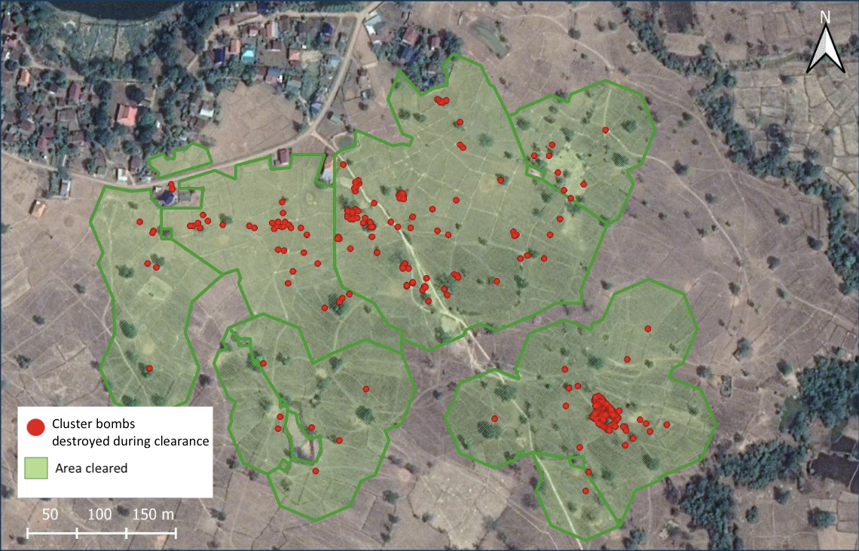
HALO survey teams use a system of 50m x 50m colour-coded boxes centred on discovered items to rapidly survey a wide area and produce a polygon known as a 'confirmed hazardous area' (CHA).
Once CHAs have been created, cluster munition clearance teams will use metal detectors to methodically search every square metre of the CHAs for items of unexploded ordnance. During clearance, the area of the CHAs is extended where necessary in order to clear a 50m radius around any cluster munitions found. The actual area cleared in Namakmi village at the conclusion of clearance is shown in the map above right.
During the CMRS phase in Namakmi we destroyed 117 items of unexploded ordnance and during clearance destroyed another 228 devices.

The 345 devices found near Namakmi were found largely in the village's paddy fields. In Laos, villagers have no choice but continue planting in areas where they know there are explosives with the potential to kill and maim.
September 2022 saw the conclusion of the US Government-funded Savannakhet Province-wide Cluster Munition Remnant Survey project, which began in 2018 as part of a nationwide plan to conduct a comprehensive survey of over 3,800 villages. The vast majority of HALO's 1,130 staff are now conducting clearance operations and the programme is planning to grow during 2023.

